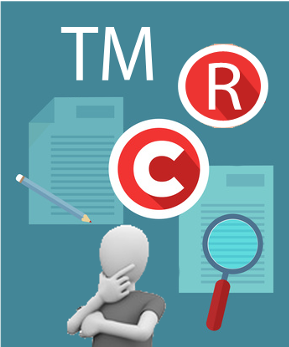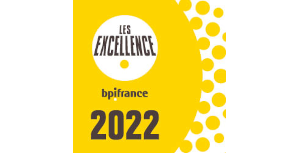The acronyms ®, TM and © are present all around us, but it should be used with caution.
The insertion of one of these acronyms on any support remains optional in many countries, but can be a communication tool and a relevant means of deterrence.
In France, there is no requirement to use these Anglo-Saxon symbols.
The acronym ®
This acronym means that your trademark has been registered (issuance of an official certificate).
The letter "r" is the first letter of the word "registered" meaning "registered" in English.
The interest of affixing this acronym is multiple:
- Inform the public that the brand is protected (legal monopoly of exploitation) and that its holder claims a right,
- Distinguish the brand from other text or graphic elements,
- Maintain its rights and avoid the risk of the degeneration of brand (enables, in particular, to indicate that the term used is a registered trademark and not a word in the common language),
- Constitute a presumption of validity of the registration,
- Obtain or increase the Damages in the event of a dispute.
On this last point, in the United States of America, the omission of this symbol may limit the remedies available in a lawsuit (ex : difficulty or even impossibility for the plaintiff to obtain Damages if it is not proved that the defendant had knowledge of the registration of the brand...).
In this territory, it is also effective to affix the mention "Reg. U. S. Pat. & TM Off" whenever it is possible. In the absence of sufficient space, it is possible to use an asterisk * near the brand, and noted in another place, "Reg. US Patent and Trademark Office".
The European Court of Justice has, for its part, admitted that the acronym could be used in all the Member States of the European Union, provided that the brand has been actually registered in at least one of these States.
|
The improper use of this symbol may be a violation of the law. Depending on the country, it can be either an act of unfair competition or a specific offense provided by the trademark law. The prohibition of the use of the ® symbol is also valide when the brand has already been deposited, but that the registration process is not complete.
|
The acronym TM
This acronym means that a distinctive sign has just been deposited at the trademark office, but that the latter has not yet been registered.
It corresponds to the English term "TradeMark" meaning "brand" in English.
It is used by applicants for trademarks in registration process.
The interest to affix this acronym remains primarily dissuasive. It informs the public of the deposit of acronym and that the detection of an identical or similar sign which may cause confusion in the eyes of consumers could be contested.
The affixing of this acronym may thus constitute a bulwark against potential acts of infringement.
You can also see this acronym appears on unregistered usage trademark, in the Anglo-Saxon countries.
It is good to remember that in France, such right of use does not exist and that the trademark right is acquired only by registration.
|
The acronyms "®" or "TM" can be part of your communication policy. It is highly advisable to integrate the use of the acronym ® on your graphic charters as soon as your brand is registered. You can also extend this policy to your licensees, subsidiaries and distributors. Thus, the consumer will understand that the sign, accompanied by one of these two elements, is used as a trademark and not in any other title. |
The affixing of the "deposited design" or "registered design" mentions
As for the trademark, it is possible to mention that some of your creations have been deposited or are registered as a drawing or design, and are therefore protected by the special right of drawings and designs.
Adding this mention to your informational or advertising documents showing your designs provides the in particular following advantages:
- Demonstrates the acquisition of an industrial property title,
- Establishes a presumption of validity and the date of creation of the design by the deposit,
- Establishes a presumption of ownership for the benefit of the applicant,
- Provides a dissuasive character by the addition of the terms on the product or on its packaging.
The acronym ©
This acronym means "copyright", and corresponds to a notion of Anglo-Saxon law.
Even if the copyright itself has no value in French law, the affixing of the symbol ©, often followed by the name of the author and the date of the first publication constitutes an effective aid to establish the quality of the author of a work whether it be in the literary, artistic, or audiovisual field.
This affixation makes it possible to benefit from a presumption of ownership in the common law countries.
|
The idea that it is important to include one of these acronyms on the representation of your brand at the time of deposit is incorrect, and can even be detrimental to you.
|
The teams of IPSIDE naturally remain at your disposal to answer all your questions relating to the problem developed above.
Guillaume ANDANSON
Lawyer Brands
REFORM OF THE CONTRACT LAW
We inform you that the Civil Code has been amended following the order of 10 February 2016 to reform the contract law, which came into force on October 1, 2016.
The main objective of this order is to facilitate and make safer the exchanges between the economic actors and also take into account technological developments; it introduces the legal provisions on the process of formation of the contract as well as on the form of the contract itself.
The reform enshrines the concepts of good faith and loyalty at all stages of the life of the contract. It protects the weak party by sanctioning the abuse of dependency of one of the parties by the nullity of the contract. It establishes a general duty of information, the possibility of making interrogations and the possibility of revising the contract for unpredictability. It introduced the principle of the "reliable copy" of the contract and marks the opening to the digitized copies.
The new law applies to all new contracts, the renewed contract and the contracts are tacitly renewed.
We remain at your disposal to study your contracts of industrial property in the light of the application of these new provisions and invite you to get closer to your Council.
Isabelle COTONNEC
Council in Intellectual Property














